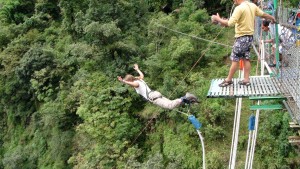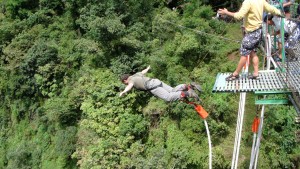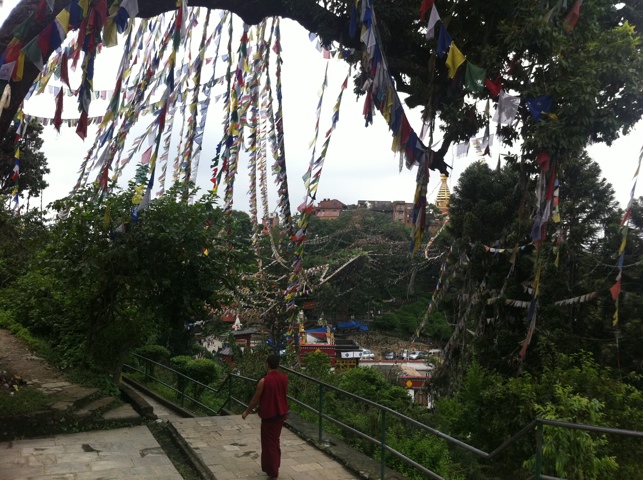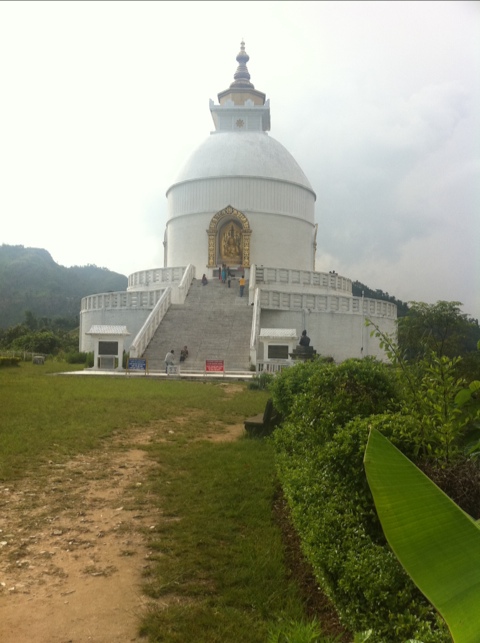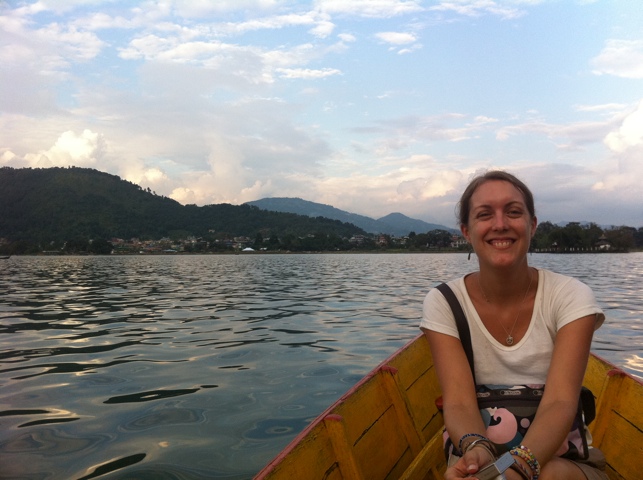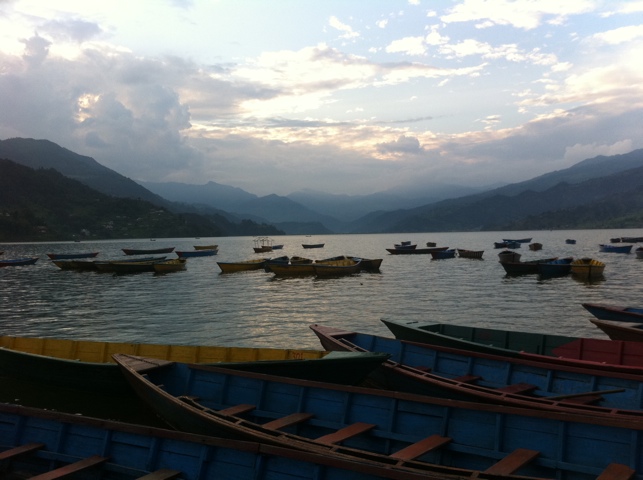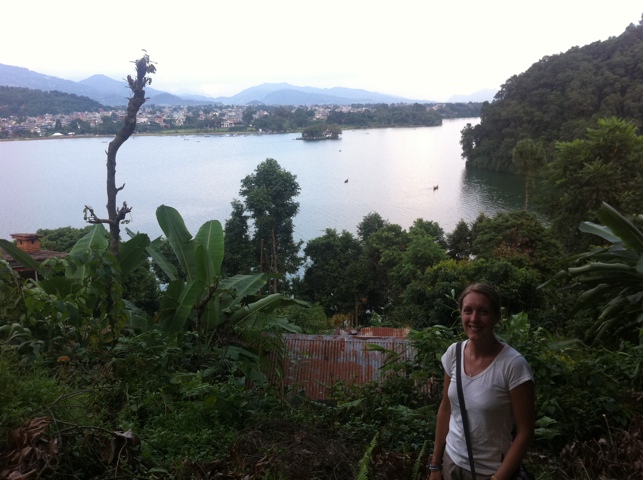
Today we leave Nepal, bound for India and the heaving metropolis of Delhi. Behind us we leave a country of mountains, rural beauty – and its fair share of memories over the three weeks we’ve spent there.
Nepal seems determined to stand out with uniqueness and not just disappear into the (noodle) soup of the Asian subcontinent. Its distinctive flag shape is the first hint – two overlapping triangles instead of the usual rectangle – and then there’s the time zone, 4:45 from GMT – that quirky quarter of an hour. While we’re at it, there’s the small matter of which year we’re in, because I’m writing from The Future. It’s 2068 here, at least on the Nepali calendar. I knew we might age a little travelling, but I wasn’t quite expecting to collect my pension so soon!
Then there’s the landscape, which has more of a sense of familiarity, but is still punctuated with distinctions to set it apart from a bland Asian broth. I’ve written enough about the soaring white and grey mountains and the raging torrents (sometimes with bouncing westerners suspended above on elastic cords). What about those bits in between the peaks and valleys?
Paddy fields lining the hillsides in a patchwork of green, with dark green stitching from the borders of reeds. These exist not just on the flat by the river, but all the way up the incline into the distance, on terraces much like you see vines in France. Between them, locals treading the paths with piles of harvested shrubbery so large on their backs that they look like they’re trying to camouflage themselves as tree people. Or maybe triffids. And always nearby, dogs dozing everywhere, basking in and out of the sun, or curled up in piles of dry corn husks, the perfect cosy natural nest.
Where the land hasn’t been cultivated, the paddy motif gives way to rich tropical forest, with plants of all shapes – ferns and palms and soaring trees, and what look like melons hanging from the canopy, with branches all clothed in a fur of soft lime green moss glistening with the condensation of the damp air. From a distance, these living green lungs appear to be fed by bright clay-red arteries slicing through the mountainside, horizontal roads intersected by vertical landslides – an evolving snakes and ladders board between mankind and nature in the journey to conquer the landscape.
Sprinkled throughout this, a seasoning of buildings, from the tall red chimney stacks of the brickworks in the Kathmandu Valley, complete with crumbling mounds of red dust the shape of former bricks, to the ramshackle corrugated iron huts and shelters of the hillside, roofs weighed down by boulders or tyres – or both. Even the more solid, constructed buildings still have a sense of being in flux, due to the plan-for-growth nature of the building style – iron rods reaching for the sky out of every rooftop in preparation for promotion into upward extension should the need – and money – arise. I just hope the skyrises beginning to appear on the Kathmandu skyline have a few more foundations!
Up close, a spiders web of black plastic pipes crisscross mountain paths – and to our surprise the other day even lakes like the Fewa Tal in Pokhara. These are black plastic hosepipes, carrying water from a nearby stream or pump to a form a continually running supply outside someone’s home, or directed into a refreshing solar shower for weary walkers. It’s fascinating to see even on some of the remotest hill paths the signs of local habitation – even if we can’t quite see where into the jungle the water leads.
I don’t think it would be right to sing about the rural beauty here without adding a melancholy verse on its destruction by mankind. The main problem is rubbish, sprouting like weeds everywhere, as much a part of the scenery as the red clay mud and the grass softly waving in the wind. First there’s the litter marring every hiking trail – crisp packets, and sauce sachets, and plastic bottles. Totally avoidable and caused by laziness by the very people apparently here to appreciate the beauty. Horrible and shameful – and getting worse since it would be a big effort to now clean it up and carry it all out down the mountain. We were, however, expecting this – not that that it in any way excuses it. The thing I wasn’t expecting to see is locals showing a total disregard for rubbish too. The streets in most towns and villages we went through are strewn with waste – and vacant plots on the steep hillside yet to be built on are used as open communal dumping grounds, with rubbish scattered down the hill for hundreds of metres below before it’s consumed by the forest again. It’s unclear what causes this neglect – insufficient funds to organise a centralised rubbish system? Lack of awareness from poor education? Apathy? It’s certainly depressing.
So we say our farewell to Nepal, a mountain country of colour and contrast, where the people on the streets display colours as strong as any mountain flower. A police force dressed in the blue camouflage gear more suitable for a marine environment (and less so for a landlocked place!); beautiful bright saris in orange and red and green, woven with glimmering silver and gold thread and fluttering in the breeze; and deep red tika on foreheads and hairlines, signifying religious and matrimonial commitment. All this colour is only emboldened by the wafting haze and scent of the incense, and in the distance, the chime of a temple bell sounding the prayers of another devotee.
Nepal’s contribution to the Asian soup may from a distance seem insignificant – a mere buffer between the great powers of India and China – but it has a distinctive taste that will remain with us as we journey on.
Simon

